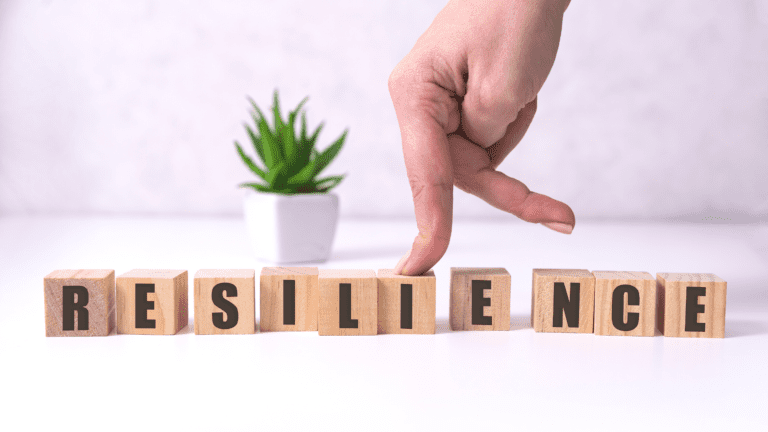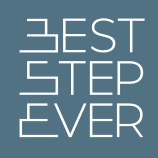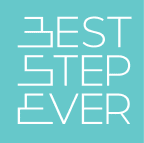How well do you manage relentless change?

So why's everyone talking about resilience?
If you want your organization to become more agile, first focus on building agility and resilience in your organization.
Here's how and why.
In a nutshell, COVID-19 has played a pivotal role in raising our awareness.
Let’s look at three types of resilience.
1. Individual resilience
We generally understand individual resilience to mean how adaptable or flexible we are in the face of difficult situations or in times of rapid change. The greater our resilience, the better we are able to deal with such events and be able to “bounce back” without being negatively affected for any length of time.
A research study on resilience in leadership identified the following variables as being associated with resilience: positive self-esteem, hardiness, strong coping skills, a sense of coherence, self-efficacy, optimism, strong social resources, adaptability, risk-taking, low fear of failure, determination, perseverance, as well as a strong tolerance towards uncertainty. That’s quite a list!
2. Workplace resilience
Workplace resilience can be defined as an employee’s ability to manage and positively overcome difficult situations or events at work. When things get tough at work, how do we deal with it?
Well, it seems that resilience is situational. Some-one who is resilient in a domestic setting, with established personal relationships, may find it harder in an organizational setting. And vice versa. We may find ourselves better able to be resilient at work (because it’s a more objective environment) but less resilient in a home situation where the personal impact may be greater.
And of course, we’re all different, so we deal with stresses and strains in different ways. Our response is deeply personal and rooted in a specific context.
3. Organizational resilience
And finally let’s talk about the macro level of organizational resilience. How does a company withstand challenges, solve problems, and remain relevant and competitive during times of change? Deep pockets and understanding shareholders help, obviously.
However, for most organizations the key lever an organization needs are flexible leaders who have foresight and tenacity. Who don’t go down with their circumstances. Who provide clear, coherent and positive leadership to the rest of the organization and actively manage the changes ahead.
Are resilience and grit the same thing?
Resilience relates to how we deal with the situation in front of us. Grit, however, has a more futuristic meaning. The American Psychological Association defines grit as our ability to persevere towards long-term goals.
So resilience is what we exercise right now, and grit is what keeps us going for the long run.
Can we develop resilience? Is it trainable?
Where-as these interventions have their advantages, in my opinion resilience is best seen as a holistic journey which is built from the inside out over a period of time. And the first step in the path is about self-discovery.
Now some of us already feel we are very resilient. And we may be frustrated with those who aren’t. Some people are just more resilient than others, and that’s the way it is. We all have different strengths and weaknesses.
That’s not to say, however, that you can’t change. If you want to.
The good news is that we CAN grow personal and organizational resilience. And if we follow the philosophy of growing from the inside out, it makes sense to grow resilient staff. They in turn enable the organization to be more resilient as a whole.
Attributes of resilience
Let’s look at some of the attributes of resilience. Here are three aspects:
- how we view ourselves (healthy self-esteem, optimism, self-efficacy)
- who we surround ourselves with (such as having positive relationships with others and a supportive network to buffer the impact of negative events)
- our belief in our broader abilities (good problem-solving and communication skills to deal with adverse situations).
Can we build our self-belief? Certainly.
Can we learn to build better relationships with others and grow a supportive network? Of course.
And can we develop broader skills such as planning, problem-solving and communication? Definitely!
From a workplace resilience point of view, people with the above traits make good leaders. And the more of these we have in the organization, the more agile and resilient the organization can become.
So it's all about developing emotional intelligence.
Well, largely yes. In a nutshell, developing emotional intelligence is a powerful way to build a range of skills which contribute towards greater resilience.
Let’s unpack a bit what emotional intelligence is all about.
We acknowledge Daniel Goleman as the grandfather of this concept. He identified four quadrants which together determine our EQ:
- Self-Awareness – the extent to which we know ourselves, our feelings, and our purpose
- Self-Management – how effective we are at self-control and managing our moods
- Social Awareness – which relates to our empathy and awareness of others
- Relationship Management – how successfully we navigate conflict, communicate and influence others
Having awareness of myself, my feelings and my abilities builds a strong self-identity which is an important aspect of resilience. I need to know who I am to know how best to bend when the winds of adversity are blowing. It also helps if I have a realistic perspective of the positive skills and abilities that I have which will help me to deal with the situation at hand.
Having strong self-management means that I don’t necessarily go down with my circumstances. When times are tough, I’m likely to have the insight to understand my feelings and to identify that the situation is temporary.
Having strong social awareness means that I’m not likely to be taken by surprise or blind-sided in difficult times. Chances are high that I’ll have read the signals and started to anticipate the tough times ahead. I’ll also understand that I’m not the only one to be adversely affected.
If I have effective relationship management skills, I can use this to good effect to face tough times with maximum resilience. I can use my influencing skills to try shape a positive outcome for myself. And when all else fails, I’ll know that I have social support through a network to lean on.
What about resilience and learning from failure?
Resilience is what we display when we pick ourselves up from failure. We develop the ability to get up. To learn the lesson and move on. Not to stay in the moment of failure and beat ourselves up about it.
And the same with organizations. Resilient and agile organizations are those who acknowledge that the result was not what they wanted. So they do a post-mortem (because they don’t want to repeat the lesson), document what they need to do differently next time round and they move on.
The faster they are able to repeat this action-learning cycle (do / review / learn / apply), the more agile they become.
So how best should we train resilience?
Many organizational initiatives around developing employee resilience focus on aspects such as mindfulness, stress management, goal setting or conflict resolution.
Where-as these interventions have their advantages, in my opinion resilience is best seen as a holistic journey which is built from the inside out over a period of time. And the first step in the path is about self-discovery.
An example of this approach is a personal development roadmap designed for BestStepEver. Employees start with gaining insight into their strengths and weaknesses and get to understand how others view them.
Once these insights are bedded down, employees explore their personal purpose and meaning. Once this groundwork is set, specific skills-building helps to boost confidence in the ability to deal with whatever challenges emerge in the future.
This is all done in short micro-learning episodes over 90 days so that there’s plenty of time to consolidate the learning and to ensure that there is personal meaning and benefit throughout each stage.
Is there enough in it for the individual?
Whatever approach the organization chooses to take in its efforts to build a resilient workforce, it’s likely to fail if there is insufficient personal benefit to the individual. Also called the WIFM factor – What’s In It for Me.
The benefits of training for resilience can be difficult to articulate. People are being prepared for the great unknown – and that’s a fuzzy concept if ever there was one. One way to make it more tangible is to communicate that the focus is on increasing personal levels of skill, in a way that gives the employee benefit and at the same time makes them more valuable – and valued.
These skills have the added advantage of increasing self-esteem, a giving sense of greater self-control and reducing stress and anxiety in the face of uncertainty.
The more that resilience training can be linked to outcomes that are of personal value and authentic benefit to the individual, the stronger the buy-in will be. And the better the results.
Does the organization have an enabling environment?
Let’s assume that a tailored program is in place through which employees grow resilience and agility in a way that delivers personal benefit.
Is this enough to build an agile organization? It certainly goes a long way, but the short answer is no.
Agile and flexible people are the essential core; however, they need an enabling culture, processes and strategy to enable the organization to be fully effective.
Here are some characteristics of resilient organizations:
- Accept the external environment as uncertain and volatile
- Value and reward responsible risk-taking
- Have fluid and flexible organizational structures (think matrix)
- Aspire to a diverse, empowering, and innovative culture
- Have fast and effective decision-making processes
How does your organization stack up against these characteristics? Each of these attributes requires focused interventions to build the necessary organizational fluidity and adaptability.
Did the pandemic help or hinder resilience?
COVID-19 turned our world upside down and we weren’t equipped. Our leaders had to make it up as they went along, in full scrutiny of the public gaze, with mixed results.
So, in theory, exposure to an event that requires maximum resilience should help to build mental flexibility, right?
What the research is telling us is that the pandemic has had and is still having a significant impact on mental health issues. Studies in the UK and the USA tell us that factors associated with the pandemic, such as an economic downturn, social isolation, facing illness and/or death of loved ones, work and study disruption, all lead to raised levels of depression and anxiety.
As a young child my mother lived through the bombing of Rotterdam, Netherlands, during the Second World War and the subsequent hunger winter (Dutch famine of 1944/45). Lifelong, the noise of airplanes flying overhead always triggered an emotional stress response in her.
This pandemic too will leave scars on many people.
The pandemic has caused, and continues to cause, a lot of problems. Maybe the bright side is that next time we’ll be better prepared – because we’re building up experience at individual, community, national and international levels which will serve us in time to come.
And like it or not, it’s building resilience in us to face the next big thing.
Where to from here?
The term resilience is thrown around a lot these days. However, few organizations are truly resilient because they don't invest in building their employees to be more than just agile. True resilience means people can do what needs to get done despite the chaos that surrounds them - and without losing themselves in the process.
Do you feel you’ve increased your resilience in the past twelve months? And is your organization doing enough to build agility and flexibility for future challenges?



